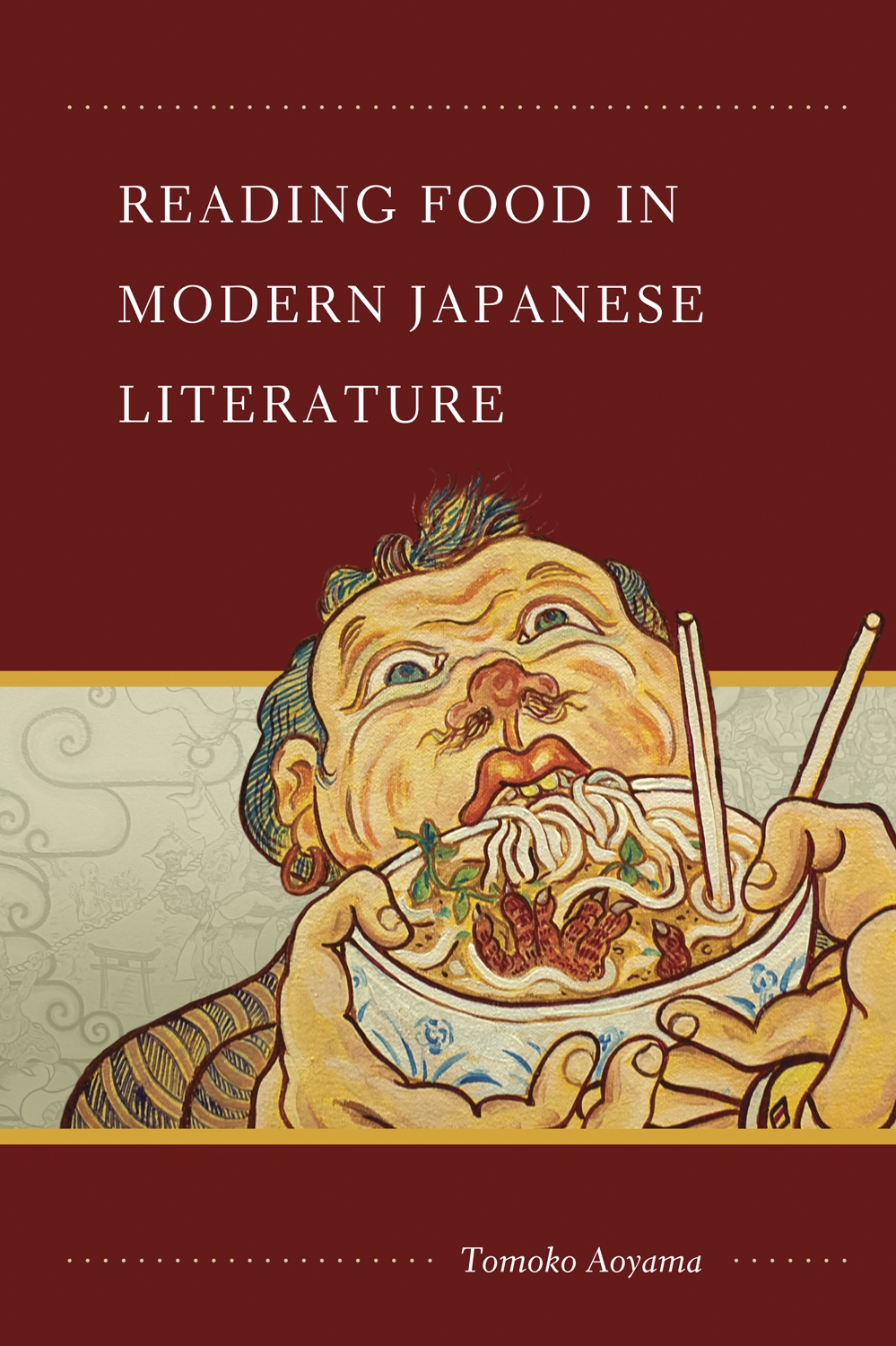Reading Food in Modern Japanese Literature
- About the Book
-
Literature, like food, is, in Terry Eagleton’s words, “endlessly interpretable,” and food, like literature, “looks like an object but is actually a relationship.” So how much do we, and should we, read into the way food is represented in literature? Reading Food explores this and other questions in an unusual and fascinating tour of twentieth-century Japanese literature. Tomoko Aoyama analyzes a wide range of diverse writings that focus on food, eating, and cooking and considers how factors such as industrialization, urbanization, nationalism, and gender construction have affected people’s relationships to food, nature, and culture, and to each other. The examples she offers are taken from novels (shosetsu) and other literary texts and include well known writers (such as Tanizaki Jun’ichiro, Hayashi Fumiko, Okamoto Kanoko, Kaiko Takeshi, and Yoshimoto Banana) as well as those who are less widely known (Murai Gensai, Nagatsuka Takashi, Sumii Sue, and Numa Shozo).
Food is everywhere in Japanese literature, and early chapters illustrate historical changes and variations in the treatment of food and eating. Examples are drawn from Meiji literary diaries, children’s stories, peasant and proletarian literature, and women’s writing before and after World War II. The author then turns to the theme of cannibalism in serious and popular novels. Key issues include ethical questions about survival, colonization, and cultural identity. The quest for gastronomic gratification is a dominant theme in “gourmet novels.” Like cannibalism, the gastronomic journey as a literary theme is deeply implicated with cultural identity. The final chapter deals specifically with contemporary novels by women, some of which celebrate the inclusiveness of eating (and writing), while others grapple with the fear of eating. Such dread or disgust can be seen as a warning against what the complacent “gourmet boom” of the 1980s and 1990s concealed: the dangers of a market economy, environmental destruction, and continuing gender biases.
Reading Food in Modern Japanese Literature will tempt any reader with an interest in food, literature, and culture. Moreover, it provides appetizing hints for further savoring, digesting, and incorporating textual food.
- About the Author(s)
-
Tomoko Aoyama, Author
- Reviews and Endorsements
-
- Reading Food in Modern Japanese Literature is an engaging and thorough study of the intersections between food and literature. The author employs current and historical scholarship on the subject and the notes are extensive, making it a useful addition to the scholar’s library. Aoyama’s writing is lucid, and her analysis includes descriptions and explanations that make it accessible to audiences outside the field of Japanese studies, including anthropologists and literature or food culture enthusiasts.
—Klara Seddon, Institute of Cultural Research, New York, Food and Foodways, 18:1-2 (2010) - The book is organized more thematically than chronologically, a feat that will please scholars and students who wish to look across time at various genres of literature. Reading Food is on its way to a gustatory revelation about the true seat of cuisine within the Japanese literary mindset. Aoyama comes to our rescue early in her manifesto to remind us that reading food in modern Japanese literature ‘involves production, distribution, preparation, and consumption,’ among other elements. She looks at how food is presented in texts but also at what it tells us about relations. Relationships surrounding food are, in Aoyama’s opinion, a window on the historical soul of Japan.
—Barak Kushner, University of Cambridge, Journal of Japanese Studies, 37:2 (2011) - Drawing from a wide variety of late nineteenth- and twentieth-century Japanese creative texts, everything from canonical works to those that have received scant scholarly attention, and juxtaposing texts that ‘are rarely discussed together,’ the book demonstrates repeatedly how writing, and food in writing, are ‘polysemous’ and ‘endlessly interpretable.’. . . Offering a diverse cornucopia, Reading Food in Modern Japanese Literature is a welcome addition to scholarship, its menu bound to entice readers with a variety of tastes.
—Karen L. Thornber, Harvard University, Pacific Affairs, 82:3 (Fall 2009) - In addition to the diverse range of thematic approaches adopted, the text discusses approximately sixty different works by nearly as many authors, with two of the six chapters covering thirteen separate works each. This enormous breadth appears to be a product of the author’s desire to break away from a moribund canon and present a radically reconfigured narrative of modern Japanese literature. . . . As a significant foray into a largely unexplored aspect of Japanese literature that combines critical awareness and precision with an impressive breadth of reading and knowledge, the text will clearly be important to specialists in the field. At the same time, gracefully and clearly written, covering a wide spectrum of literature, writers, periods, genres and theoretical approaches, it is eminently suitable for undergraduate and graduate courses on modern Japanese literature and culture.
—Mark Gibeau, The Australian National University, New Zealand Journal of Asian Studies 12:1 (June 2010)
- Reading Food in Modern Japanese Literature is an engaging and thorough study of the intersections between food and literature. The author employs current and historical scholarship on the subject and the notes are extensive, making it a useful addition to the scholar’s library. Aoyama’s writing is lucid, and her analysis includes descriptions and explanations that make it accessible to audiences outside the field of Japanese studies, including anthropologists and literature or food culture enthusiasts.
- Supporting Resources
-





